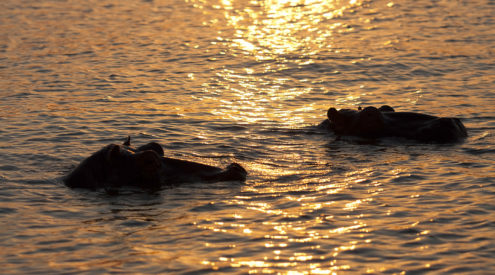South Africa is filled with a rich diversity of birds of many shapes, sizes, colours and sounds, yet herons seem to own the water’s edge with their height and pure elegance.
These long-legged coastal and freshwater birds belong to the family Ardeidae and they’re mostly easy to spot – you may not even need binoculars. Some are called herons, while others are called egrets and bitterns and our region boasts no less than 22 species, with all but four occurring regularly. (They’re not biologically distinct and egrets are named differently because they’re mainly white, have decorative plumes and are mostly smaller than herons.)
To the uninitiated, this family of birds can be confused with storks, ibises, spoonbills and cranes, so to make identification easy, look at their necks when they fly: the heron family all fly with their necks retracted, while the others fly with their necks outstretched.
Only the black-headed heron and the cattle egret (probably Southern Africa’s two most common herons) feed frequently on dry land, all others relish the watery world of the shorelines of ponds, lakes, rivers, swamps, marshes, dams, vleis, intertidal zones or even coral reefs. Feeding techniques and food preferences are directly related to the physical structure of each species and most will spend much of their feeding time standing like statues or wading slowly through the shallows.
Some of the heron family may also run intermittently, hop or flick their wings about and others fiddle in the mud with their feet, using a method called hover-stirring. Probably the most intriguing and glamorous feeding technique is that of the black heron. In a behaviour called canopy feeding, it brings both wings forward to create a bizarre umbrella shape, with the resultant shade setting a trap for a luckless victim looking for a safe hiding place.
Herons’ courtship displays, which they use to form pair bonds, are equally fascinating. For example, common, resident grey herons yelp while performing a stretch-and-snap display, with necks extended and beaks clanking. A male signals from a place he selects (in most cases this is near the eventual nest site) and the female, attracted to his displays, chooses whether to engage in mutual courtship.
Some species have a loud acoustic component to these displays. This sort of powerful advertisement is well illustrated by the haunting, booming call of the Eurasian bittern, a rare resident of Southern Africa and a local nomad that lurks in deep reed beds. For those species nesting in breeding colonies called heronries, there’s fierce competition for females and both visual and acoustic signals are plentiful at these extravaganzas of feathers, which treat bird-watchers to frantic battles for love.
Herons are a beautiful and accessible group of birds and if you watch carefully, you’ll be privy to a narrative rich in theatre, drama and delight.
BirdLife South Africa
BirdLife South Africa is an organisation of thousands of bird-watchers. It’s also an organisation of passionate conservationists. When we watch birds, we do so with responsibility and concern as well as with fascination and enjoyment. Join our family and help us learn from birds and for the birds. Help save the fragile natural environment by saving wild birds. Tel 011-789-1122, email [email protected], www.birdlife.org.za.

















